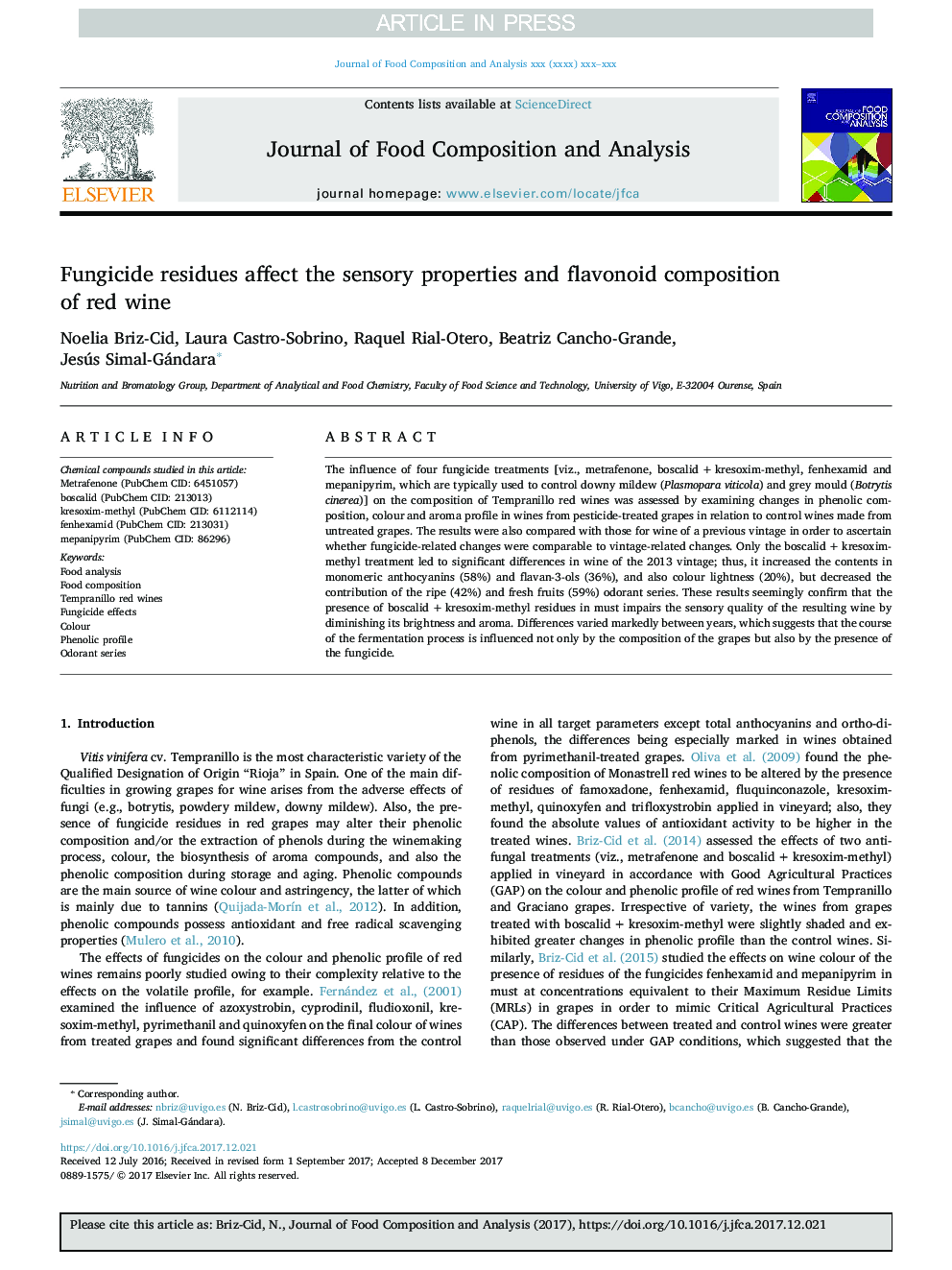| Article ID | Journal | Published Year | Pages | File Type |
|---|---|---|---|---|
| 7619941 | Journal of Food Composition and Analysis | 2018 | 8 Pages |
Abstract
The influence of four fungicide treatments [viz., metrafenone, boscalidâ¯+â¯kresoxim-methyl, fenhexamid and mepanipyrim, which are typically used to control downy mildew (Plasmopara viticola) and grey mould (Botrytis cinerea)] on the composition of Tempranillo red wines was assessed by examining changes in phenolic composition, colour and aroma profile in wines from pesticide-treated grapes in relation to control wines made from untreated grapes. The results were also compared with those for wine of a previous vintage in order to ascertain whether fungicide-related changes were comparable to vintage-related changes. Only the boscalidâ¯+â¯kresoxim-methyl treatment led to significant differences in wine of the 2013 vintage; thus, it increased the contents in monomeric anthocyanins (58%) and flavan-3-ols (36%), and also colour lightness (20%), but decreased the contribution of the ripe (42%) and fresh fruits (59%) odorant series. These results seemingly confirm that the presence of boscalidâ¯+â¯kresoxim-methyl residues in must impairs the sensory quality of the resulting wine by diminishing its brightness and aroma. Differences varied markedly between years, which suggests that the course of the fermentation process is influenced not only by the composition of the grapes but also by the presence of the fungicide.
Related Topics
Physical Sciences and Engineering
Chemistry
Analytical Chemistry
Authors
Noelia Briz-Cid, Laura Castro-Sobrino, Raquel Rial-Otero, Beatriz Cancho-Grande, Jesús Simal-Gándara,
